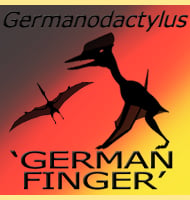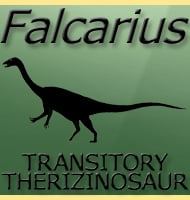In Depth
For the first part of their taxonomic life, fossils of Lufengpithecus were actually known as Ramapithecus lufengensis (‘Rama ape from Lufeng). Between 1975 and 1976 however, much more complete fossils of Ramapithecus were recovered, but instead of allowing for more complete restoration of this ape they led to the realisation that the genus Ramapithecus was actually established upon smaller specimens of the earlier named Sivapithecus (possibly females of this genus). Not all the fossils of Ramapithecus were a perfect fit for Sivapithecus however and one species in particular, R. lufengensis, was considered to be just different enough to be re-established as a new genus. Thus this led to the naming of the type species Lufengpithecus lufengensis which means ‘Lufeng ape from Lufeng’. This would not be the first time that a species of Lufengpithecus would be created in such a way as fossil remains of Dryopithecus keiyuanensis would later be shifted over to create Lufengpithecus keiyuanensis.
Because of the above history and similar features, Lufengpithecus is regarded as a very close relative of the orangutan-like Sivapithecus and as such is possibly also related to the huge Gigantopithecus. Teeth of Lufengpithecus have low crowns and thick enamel which has led to the idea that Lufengpithecus existed upon a diet of tough vegetation, possibly even bamboo. The known remains of Lufengpithecus all point towards the genus showing strong sexual dimorphism similar to that of old world monkeys where males are larger than females.
Exact classification of Lufengpithecus is actually under debate with some palaeoprimatologists considering it to be a distinct member of the Ponginae, while others regard it as belonging to the Homininae. Argument for this has come from study of Lufengpithecus fossils of the facial bones, particularly the sinuses and dental areas. There is also suggestion that Lufengpithecus was better able to support itself in a bipedal posture, although these claims are controversial and are likely to remain so until further study and/or remains can shed more insight upon this matter.
Fossil material that was used to establish Lufengpithecus chiangmuanensis has since been referred to the genus Khoratpithecus.
Further Reading
– Longgupo: Early Homo colonizer or late Pliocene Lufengpithecus survivor in south China?. – Human Evolution. 16: 1–12. – D. A. Etler, T. L. Crummett & M. H. Wolpoff – 2001. – A Middle Miocene hominoid from Thailand and orangutan origins. – Nature 422:61-65. – Y. Chaimanee, D. Jolly, M. Benammi, P. Tafforeau, D. Duzer, I. Moussa & J.-J. Jaeger – 2003.









